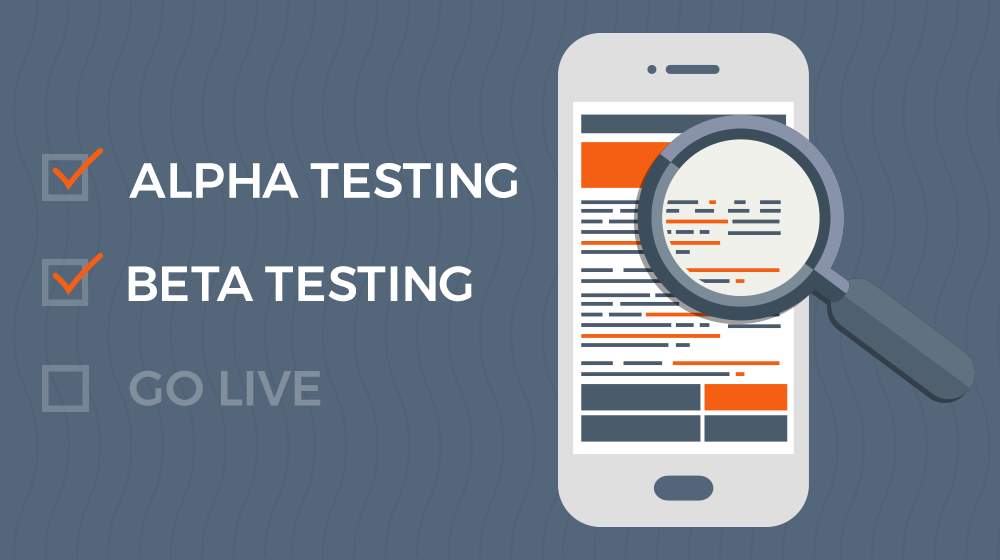
As we all know that before actually releasing the software on the market, software must first be put through what is known as “Software Testing.” Software testing is considered to be the most important component of software development.
Testing software before it is used makes you aware of any potential flaws it may encounter when operating. Errors that are discovered at this point can be fixed. Doing so assures that the software will function correctly and reduces the likelihood of problems arising when it is really being used.
One of the most important aspects of software testing is known as user acceptability testing, and this sort of testing is further segmented into two subcategories: alpha testing and beta testing.
Testing in both the Alpha and Beta stages is essential to ensuring the success of any program.
Both of these testing methods have been shown to be quite effective, and they have been a blessing in disguise, saving large firms like Apple, Microsoft, and Google a significant amount of money in the process.
Both Alpha and Beta testing are Customer Validation procedures. These procedures create confidence to launch the product, which ultimately results in the product’s success on the market as a result of the launch. Both of these testing procedures depend on feedback from real users and diverse teams; the methods, strategies, and goals that drive them are quite different.
When combined, these two methods of testing improve a product’s chances of being successful and prolong its time on the market. These phases are adaptable to products aimed at either consumers, businesses, or enterprises.
This article will provide you with a detailed understanding of both the Alpha Testing and the Beta Testing processes and their advantages. Read on.
Table of Contents
Table of Contents
- What exactly is “Alpha Testing”?
- What exactly is “Beta Testing?”
- What Is The Purpose Of Alpha & Beta Testing?
- What are the most critical distinctions between the Alpha and the Beta testing phases?
- What are the Advantages of using Alpha and Beta Testing?
- Benefits of Alpha testing
- Benefits of Beta Testing
- Wrapping up
What exactly is “Alpha Testing”?
Alpha testing refers to the internal testing that many different companies carry out with the assistance of their own proprietary software. A team of highly competent testers carries out the alpha testing at the location of the development.
Before the Alpha testing phase, testers first carry out the Pre-Alpha testing. During this phase, the development of software as well as the requirements for it, are analyzed and recognized and based on these findings, subsequent activities are carried out.
Alpha Testing begins whenever the development process is modified in any way. The program, in its alpha form, is put through the processes of debugging and validating throughout the alpha testing phase.
The test can be carried out by either full-time testers or dedicated testing teams, and either option is acceptable.
Techniques such as white box and black box testing underpin the Alpha testing methodology.
At this point in the process, the functionality of the software is tested depending on the input that has been provided.
During this phase, any feature or function desired to be included in the software might be added. While Alpha Testing is underway, no outside users will be permitted to participate.
Alpha testing may also be carried out by individuals who have an interest in using or purchasing the program.
What exactly is “Beta Testing?”
After the Alpha Testing cycle has been finished, we move on to Beta testing. Beta Testing is the final step of testing, in which corporations release the software to a select number of user groups that are not employees of the company or members of the company’s test teams. The vast majority of businesses now collect feedback from customers in this release.
During this phase, the company will distribute the software so that it may be tested by test teams that are not affiliated with the company.
At this stage, testing is being carried out in a natural setting and with genuine participants.
The beta version of the program is subjected to both validation and bug testing during the testing phase.
The purpose of beta testing is to determine the strengths and weaknesses of a program while taking into account its end users.
Beta testers are people who have a lot of expertise in the testing process, as well as those who have used the program being tested in the past or are familiar with a previous version of the application.
The company that does beta testing has a diverse group of people with whom they collaborate on a regular basis.
This process involves delivering the program in question to end users, who then evaluate both its usability and its features.
Open beta testing is another name for beta testing since it allows participants from outside the company to take part in the testing process. Beta testing also emphasizes black box procedures.
Fixing the problems that are found during beta testing can assist in bringing down the overall cost of developing the program by eliminating a number of the software’s more insignificant flaws before it is made available to the public.
What Is The Purpose Of Alpha & Beta Testing?
As said earlier, Alpha and Beta Testing are customer validation procedures. In both these testing phases, the primary focus is on finding flaws in a product that has already been tested. These phases also provide a detailed image of how real-time users interact with the product.
They also assist in getting expertise with the product prior to its introduction, and vital input is successfully adopted in order to boost the product’s usability.
The objectives and procedures of the Alpha and Beta Testing do change depending on the process that is being used in the project, and they can be modified so that they are in line with the processes that are being used.
Even while many businesses perform stringent quality assurance checks in-house with the help of professional test teams, it is nearly impossible to test an application in each and every possible combination of the test environment.
Before releasing an application to the general public, it is often expedient to conduct beta testing on a large number of test machines in order to identify and address any problems that may arise.
The business has the option of either inviting a select group of people to test the preview version of the application or releasing it publicly so that any user can test it out for themselves. The development costs greatly reduce by fixing the issues in the beta release. This is because the majority of the small bugs are fixed before the final release.
Both of these testing strategies have resulted in cost reductions of thousands of dollars for large-scale software releases carried out by firms such as Apple, Google, Microsoft, and others.
For instance, Microsoft Corporation launched the beta version of Windows 10, and by incorporating the comments and suggestions of thousands of customers, they were able to successfully launch a reliable operating system version.
What are the most Critical Distinctions Between the Alpha and the Beta Testing Phases?
The very first step in the process of confirming whether or not a brand-new product or software is operating as planned is called “alpha testing.”
It is performed early on in the development process by members of the internal staff, and the scope of the testing can be as large or as small as desired.
Notably, the feedback comes from those already employed by the organization.
After this, beta testing, in which a subset of your target market from outside the company actually uses and evaluates the product.
This process, in contrast to those earlier Alpha tests, is one of the final stages that must be taken before going live.
Before the product is released to the general public, this is essentially your last chance to check in with your target demographic to make sure they enjoyed the experience.
In order to get customer feedback, companies frequently put out a call for volunteers from the real world.
Related Post: Software Development Life Cycle Process, Phases, Benefits and Models
What are the Advantages of using Alpha and Beta Testing?
Benefits of Alpha Testing
Both black box and white box testing are a part of the alpha testing process. That denotes that it is intended to test the system’s design as well as its internal structure, in addition to putting the input and output functionality of the system through their paces.
It does this, and this is important, within a simulated environment that features testing settings that are relatively accurate.
This ensures that it is as near to the actual thing as possible while yet providing a secure environment in which to conduct tests before being released into the wild.
In addition, given that they are internal evaluations, the turnaround time for results is typically quite quick.
Development teams can find any flaws in the program and rectify them before entering the Beta phase.
Benefits of Beta Testing
Before a product is published to the general public, it is often made available to a small group of users for testing and feedback in a “beta” form. In order to assess if the product is ready for release, data is gathered from beta users.
Beta testing not only provides an additional opportunity to find faults before the product is made available to the public, but it also does so in an authentic setting.
It is carried out by a team of testers that is significantly larger than the quality assurance team that is employed in-house by a company.
The goal here is to broaden both the scope and the representation of the issue.
It also frees up resources that are used internally for development and testing, which results in time and money savings for the developer.
Beta Testing assists in significantly broadening the scope of your testing.
It offers an additional level of testing and validation of the product during the course of the product development lifecycle.
Beta testing is typically more affordable than alpha testing.
This helps clients feel more satisfied with their purchases and fosters trust among those customers.
Last but not least, there is frequently an incentive to test.
For instance, Maven Clinic recruited women between the ages of 18 and 40 and provided them with free credits to use their health and wellness web application to interact with nutritionists and physical therapists and submit feedback on their experience.
Wrapping it up…
So this is all about Alpha and Beta testing and advantages of Alpha and Beta testing. Both these testing phases are essential components of the testing lifecycle.
These tests validate whether or not the software is of use to the public. Alpha testing is performed on software before it is sent to Beta Testing. This helps imitate real-time user environments and contributes to the formation of reliable software candidates that are eligible for Beta Testing. Whereas Beta testing is a method that helps get genuine feedback on your program from actual users.






